Song Kul is one of the most popular destinations in Kyrgyzstan, especially known for the horseback riding tours that cross its wide steppes to reach the lake. However, true to form, I decided to hike it, and it turned out to be a very different experience from the treks I'd done in the Karakol area. Here, the terrain is more open, without as many slopes or demanding mountain passes, with some notable viewpoints and more activity near the lake due to the yurt camps that remain active during the summer.
The hike to Song Kul isn't as much about extreme landscapes as it is at Ala-Kul or Archa-Tor, but rather about exploring wide valleys, watching the grass change color in the sun, passing herds and yurts, and feeling yourself drift away from everything. It's a different pace, calmer and less changeable, perfect if you're looking for a less physically intense experience.
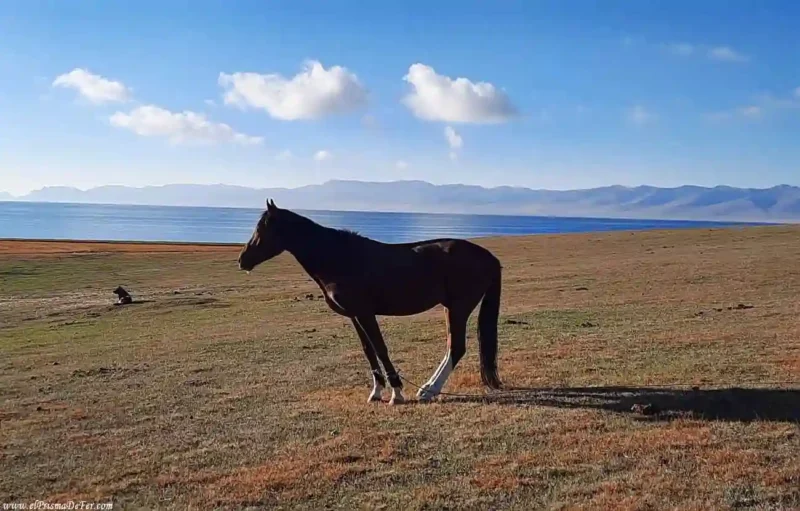

Table of Contents
🗺️ Technical sheet for the Trekking to Song Kul Lake
| Start |
| Kochkor |
| Final |
| Kyzart |
| Duration |
| 3 days |
| Distance |
| 60 km |
| Estimated time in hours |
| 21.30 hs |
| Max. Altitude |
| 3326m |
| Difficulty |
| Easy-Moderate |
| Signaling |
| None |
| Water/food |
| Water can be found in rivers and some food can be found if there is a yurt camp. |
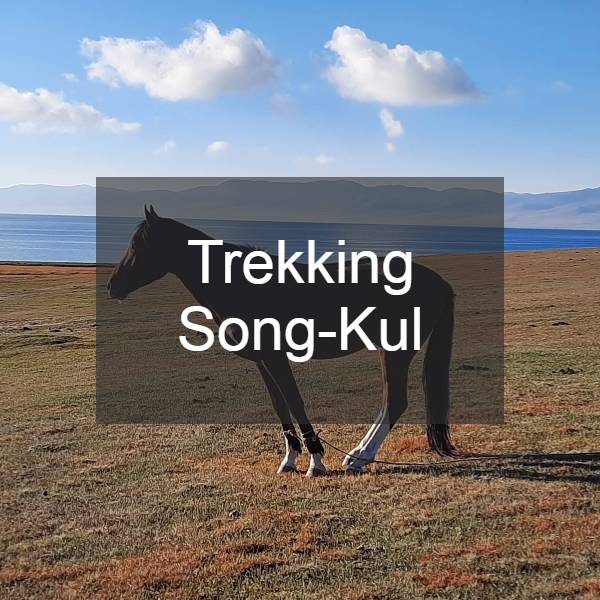
Do you want to follow this route precisely?
Download the KML/KMZ file for the 3-day trek to Song Kul Lake and open it in apps like Maps.me or Gaia GPS to view the complete route offline. This is ideal if you want to navigate the valley with confidence, even without a signal.

Kochkor, the base for exploring Song Kul
Kochkor is the most common starting point for those who want to reach Song Kul, whether on foot, on horseback, or on an organized tour. Honestly, I didn't like the town itself much: it's rather drab, without much charm or much to do. But its usefulness lies in its strategic location, as several routes to the lake depart from here, and you can also arrange transportation, rent horses, or hire guides if needed.
To get to Kochkor, the most common route is from Bishkek or Karakol. From Bishkek, there are marshrutkas (shared minibuses) that depart from the west of the city and take about 4–5 hours. It's also possible to combine transportation if you're coming from other villages, such as Tamga or Naryn. Once in Kochkor, there are plenty of guesthouses and several community agencies (such as CBT) where you can plan your trek or simply get maps and useful advice.
I stayed at Happy Hostel. A basic but comfortable hostel run by a very friendly family, with a grandmother who's happy to chat (they don't speak English) and treat you to meals. It's conveniently located and one of the cheapest in Kochkor.
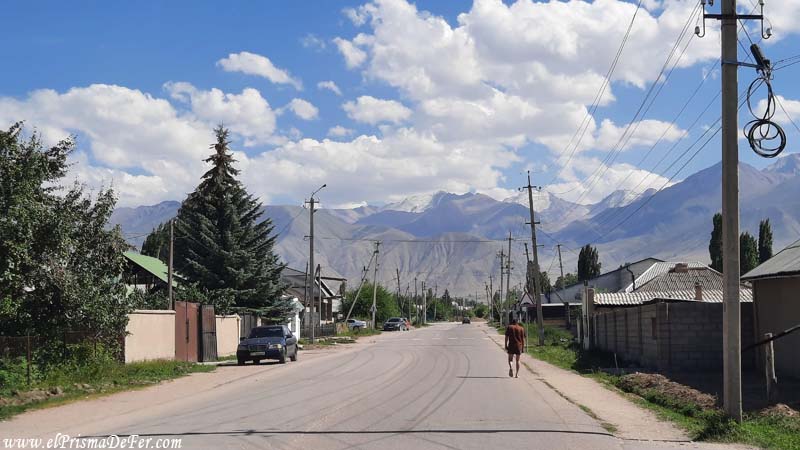

What is the best time to trek to Song Kul?
The ideal season for this trek is between mid-June and early September. Before that, many mountain passes are still covered in snow, and after that, temperatures begin to drop significantly, especially at night. Even in midsummer, it can be cold, especially in the lake area, which is over 3,000 meters above sea level. The weather is changeable, so it's best to be prepared for sun, wind, rain, and even the occasional snowfall.
Other ways to get to Song Kul Lake
Although hiking to Song Kul Lake is a beautiful experience for trekking enthusiasts, it's not the only way to get there. You can also get there by car, though it's worth keeping in mind that it's not the most economical option: at over 3,000 meters above sea level and far from main roads, the journeys are often long, along gravel and mountain roads, which makes the cost quite high, especially if traveling alone.
The most popular option for those seeking a different experience is horseback riding. In fact, it is the traditional and most promoted way to get there, especially from Kyzart or from Jumgal. Many local agencies like CBT or independent organizers offer 2- or 3-day horseback riding tours, with stops at yurts along the way. This is a good alternative for those unfamiliar with walking long distances but still want to enjoy the rural, mountainous surroundings of the heart of Kyrgyzstan.
Useful tips for trekking to Song Kul
- Bring a coat: Even in summer, nights can be cold. A sleeping bag isn't necessary, but thermal clothing is always welcome.
- No need to bring a tent: unlike what is recommended for trekking near Karakol, here, at least in high season, there are many yurt camps where you can spend two nights.
- Sun protection: The sun is strong at this altitude. Sunscreen, sunglasses, and a hat are essential.
- Water and food: There are some places where you can refill water (rivers and streams), but it's always a good idea to bring water purification tablets or a filter. As for food, dinner and breakfast will be provided at the camps, so bring what you need to eat for the rest of the day.
- Horses and cargo: If you don't want to carry a lot of weight or don't feel like walking the entire route, you can hire a horse to carry your luggage or even walk the entire route.
- The altitude shouldn't be a problem: The maximum altitude reached at the Jalgiz Kara mountain pass is 3,326m, so it shouldn't be an inconvenience, although it never hurts to acclimatize a little in the days beforehand.
- Hiking boots. While there are no steep or loose rock sections, it's always advisable to wear good footwear. There are no rivers to cross on foot.
- Download offline maps or bring a GPS with the trail track. This trail isn't very well marked, so having an offline map is essential. I recommend using Maps.me with the downloaded map of the area. The app has all the hiking trails in the Song-Kul area marked.
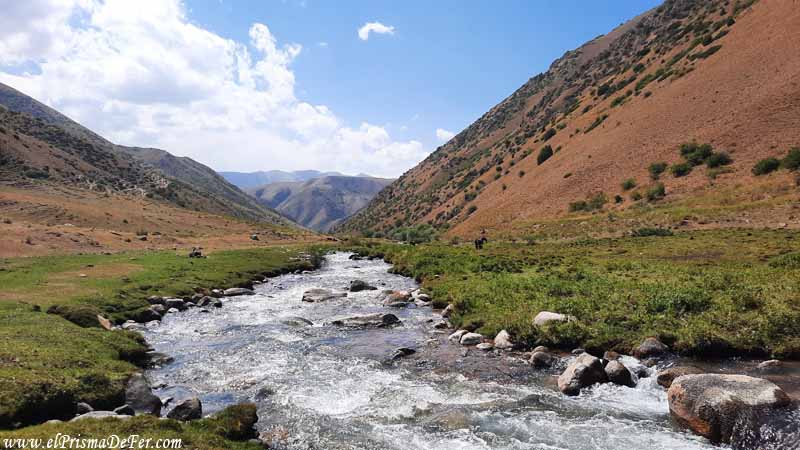
Where to sleep during the Song Kul trek?
Unlike the treks near Karakol, Ala-Kul, and Archa Tor, you don't need a tent to camp here, especially in summer. There are several strategically located campsites in the area where you can spend the two nights of the trek or horseback ride.
First Night
The first night I slept in a small camp called Kilemche CBT, located just before the start of the climb to the Jalgiz Kara mountain pass. You can book in advance at the CBT office in the town of Kochkor, although you can also arrive without a reservation and try your luck. If there's no space, it's not a big problem: there are other camps in the surrounding area that can serve as an alternative.
The price was 1500 som without dinner or 2000 som with dinner and breakfast.
Second Night
The second night I slept in one of the many yurt camps on the shores of Song Kul Lake. During high season, there are many spread out across the lake, and it's easy to find accommodation without a reservation. The price was 1,500 som, with dinner and breakfast included.
The experience of sleeping in a traditional yurt, with open views of the lake and surrounded by the vast, serene landscape, is one of the great attractions of trekking.
Most of these camps offer bed, dinner, and breakfast, although the conditions are basic: single beds, no showers in some cases, and bathrooms outside the yurt. But the hospitality of the nomadic families and the experience itself make it worthwhile.

How to get to the starting point of the trek?
The starting point of the Song Kul trek is not in a specific town, but in the middle of the route connecting Kochkor with Kyzart. There is no frequent public transportation that runs along this exact stretch, so it's best to arrange a private car or taxi transfer from Kochkor. Most local drivers are familiar with the area and know where the trailhead is.
I joined a small group of hikers through the CBT agency in Kochkor. From there, we arranged a shared ride and all went together to the starting point. It cost approximately 500 som each (there were six of us in total, and the trip cost 3,000 som). It's a good option if you want to save money and meet other travelers. Another option, if you have the time and are up for adventure, is hitchhiking, although it's not the fastest option.
Whichever route you choose, the important thing is to plan well and make sure you arrive early to start the hike with plenty of light and energy.
Song Kul Lake trekking map
Day 1: From Kochkor to Chaar Archa Pass and arrival in Kilemche
| Distance |
| 18 km |
| Estimated time |
| 8 hs. |
| Elevation Profile |
| From 2.500 to 3.000 mts |
The trek to Song Kul begins with a completely different atmosphere than the trails in Karakol. This area lacks forests and fast-flowing rivers, but instead features broad, less rugged, brown-hued hills with gentle slopes. The terrain is arid and open, with a beauty that is overwhelming due to its vastness and silence.
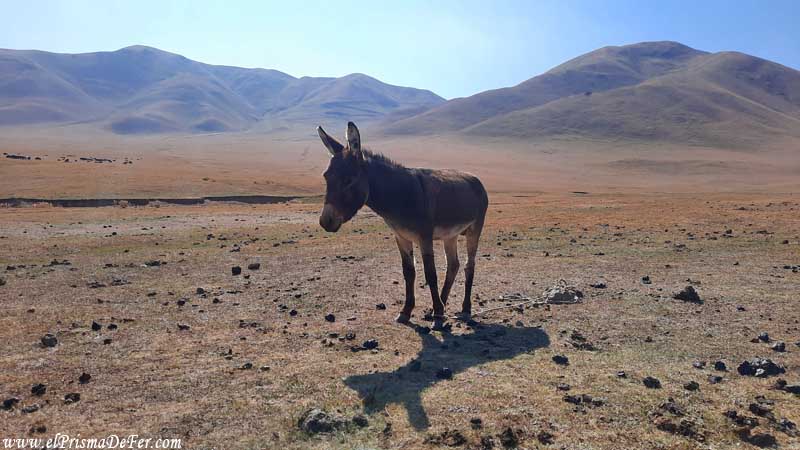
During this first day, you'll cover approximately 18 kilometers in about 8 hours of walking, crossing two mountain passes: the highest is the Chaar Archa Pass, at 3,043 meters above sea level, and then a lower one, at about 2,700 meters. The climbs are constant but accessible, with no technical sections, although good physical condition is required due to the duration.

The goal of the day is to reach the Kilemche yurt camp, managed by the CBT (Community Based Tourism) network. It's an ideal place to rest after a long day and offers the kind of traditional hospitality you'll find throughout the trek. The landscape opens up to vast grasslands, and as you approach the camp, it's common to see grazing animals and nomadic shepherds moving around.
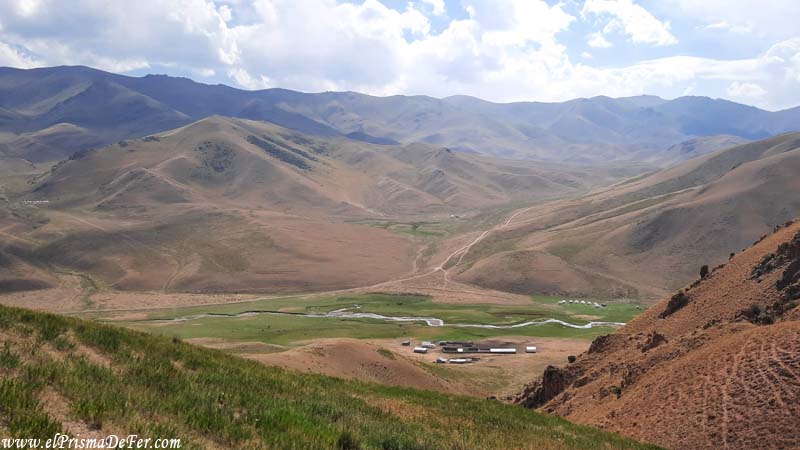
If you go during the high season (especially between July and August), it is advisable to book in advance, as the flow of travelers is usually high. However, you can also arrive directly without a reservation, as there is almost always availability, and if there is no space at that specific campsite, there are other nearby campsites in the area that also welcome hikers.
Day 2: Crossing the Jalgiz Kara Pass and arriving at Song Kul Lake
| Distance |
| 18 km |
| Estimated time |
| 6.30 hs |
| Elevation Profile |
| From 2.600 mts to 3.300 mts |
The second day begins with the biggest challenge of the trek: crossing the Jalgiz Kara Pass, which at 3,326 meters above sea level is the highest point of the entire trek. The climb starts early and demands sustained effort, but without any technical sections. As you ascend, the landscape becomes more dramatic, and upon reaching the summit, the panoramic views reward all your efforts: undulating mountains in ochre and green tones stretch to the horizon, and on clear days you can already make out the lake in the distance.

I recommend taking a long break at the top of the pass, eating something, hydrating, and enjoying the scenery calmly, as the views from there are some of the best of the entire trek.
After passing the highest point of the route, the trail begins a steady, fairly gradual descent. As we descend, the landscape gradually opens up until, almost without realizing it, the immensity of Song Kul Lake appears before us. Before arriving, a curious, solitary monument in the middle of nowhere marks a striking landmark due to its isolated location.
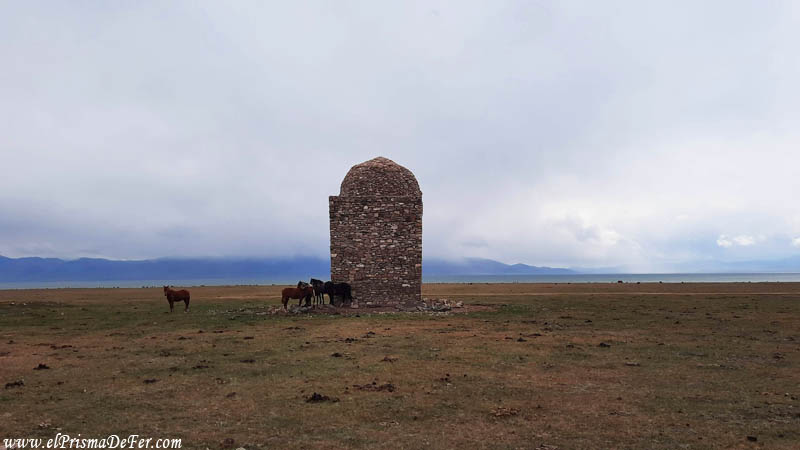
Once on the shore, you can clearly appreciate the size of the lake: vast, calm, surrounded by gentle hills that seem to go on forever. Along the shore, there are several yurt camps to choose from, although they are quite far apart. I chose to go to the right, following the shore, because it was convenient for the next day's hike. The yurts are very well equipped, and some even have bathrooms with toilets, something unusual in such remote areas.
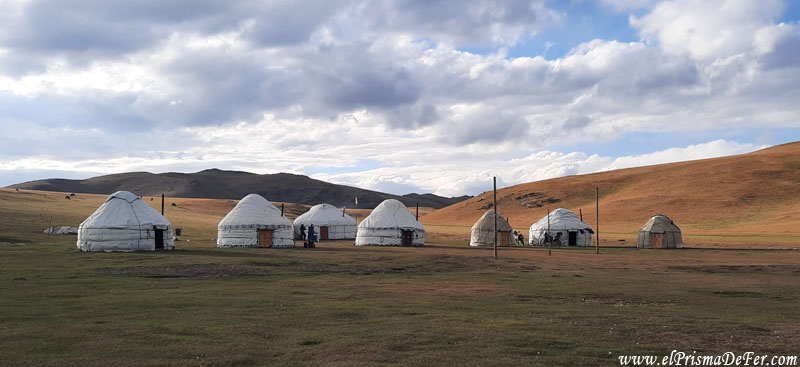
As it's a shorter trekking day, this day offers plenty of time to rest, take a leisurely stroll around the area, or even take a dip in the lake... although be warned: the water is freezing.

Day 3: Heading to Kyzart, closing the circle
| Distance |
| 24 km |
| Estimated time |
| 7 hs. |
| Elevation Profile |
| From 3.300 mts to 2.100 mts |
The third day aims to reach the village of Kyzart, which entails a hike of about 24 km, taking approximately 7 hours. This is the longest stage in distance, but also one of the most enjoyable. The trail starts from the camp, following the lake shore for a stretch, and then begins a new climb that takes us to another mountain pass, also close to 3,300 meters above sea level.
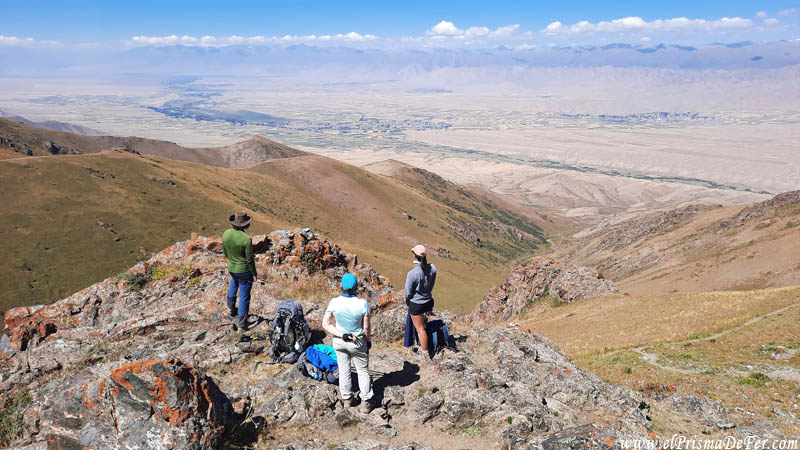
Once we reach the pass, we finally leave the views of Song Kul Lake behind, but the landscape on the other side is no less so. The panorama is breathtaking, with green hills, distant mountains, and the small village of Kyzart looming in the distance, the final destination. The descent from there is long but gradual, allowing you to enjoy each view without overexerting yourself.
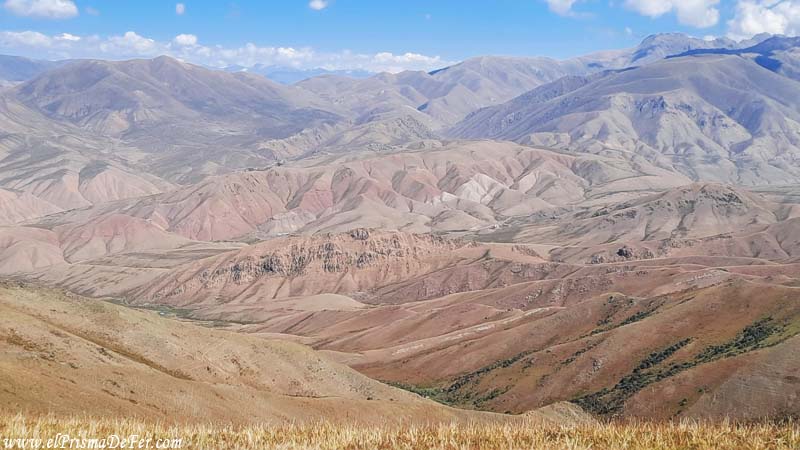
I'd say this section was my favorite of the trek, thanks to the scenic views and the feeling of winding down the adventure with a contemplative walk. Near the end, the terrain flattens out, and just before entering Kyzart, we passed a picturesque cemetery with Arabic-style tombs, which provide a very distinctive image at the end of the hike.
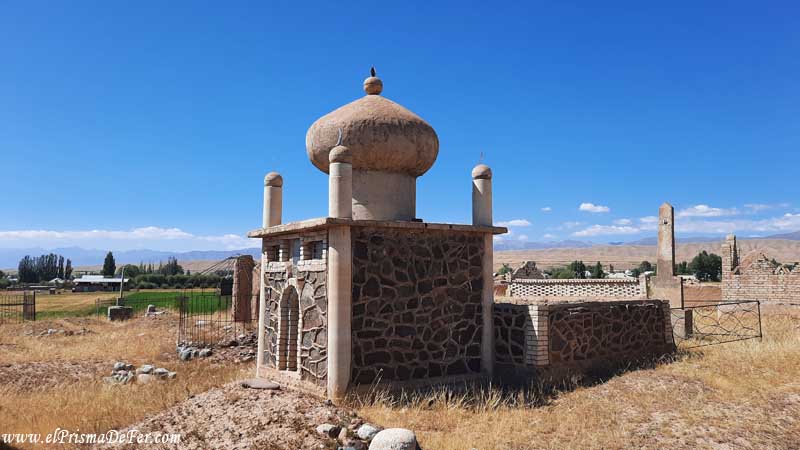
How to get back from Kyzart to Kochkor?
Once you've finished trekking in Kyzart, it's time to organize your return to Kochkor. It's important to know that there's no regular public transportation from this village, so your options are limited to negotiating with a local driver or hitchhiking.
Since I was with a group, we arranged for a local car to take us. Keep in mind that prices are usually high, since the driver has to make the round trip and doesn't always find passengers for the return trip. We paid 3000 som for the whole car.
If you're alone, hitchhiking can be a viable option: there's some traffic, especially from other travelers or locals heading down to Kochkor. Of course, be patient and flexible, and it doesn't hurt to include this expense in your travel budget.
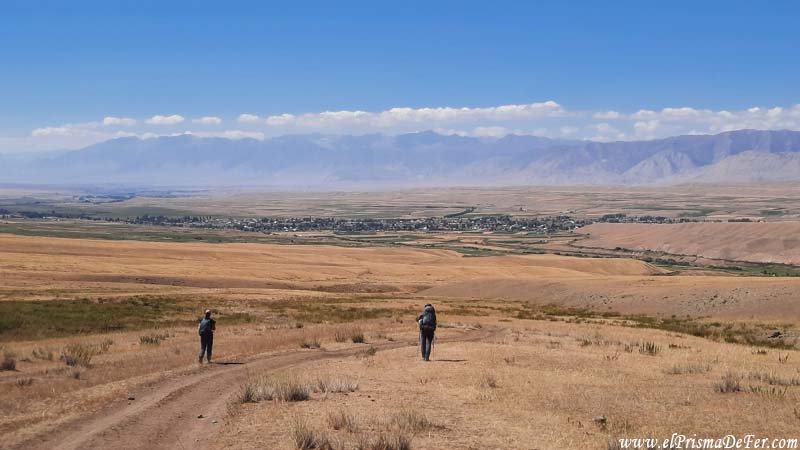
Final thoughts: Is trekking to Song Kul worth it?
Song Kul is undoubtedly one of the most well-known and touristy destinations in Kyrgyzstan, but compared to other areas of the country, such as the area around Karakol or the south towards Lenin Peak, it didn't seem like the best trekking the country has to offer. Over the three days, I found the landscapes to be somewhat monotonous, with wide hills, pastures, and gentle mountains that didn't really impress.
The lake itself is large and has a beautiful turquoise color, but I didn't find it impressive either, especially considering that Issyk Kul, which is much more accessible, also offers beautiful views and more possibilities around. Perhaps that's why many choose to do this route on horseback, which ends up being more of a relaxing walk than a real trekking adventure.
In short, I wouldn't recommend it if you're short on time and want to prioritize more intense hikes or more varied landscapes. But if you have plenty of time and are looking for a more peaceful experience, with the possibility of sleeping in yurts and being close to the nomadic life, it may be a good option.
Support The Prism of Fer!
Your support helps me continue creating free content on the blog. Thank you so much!





